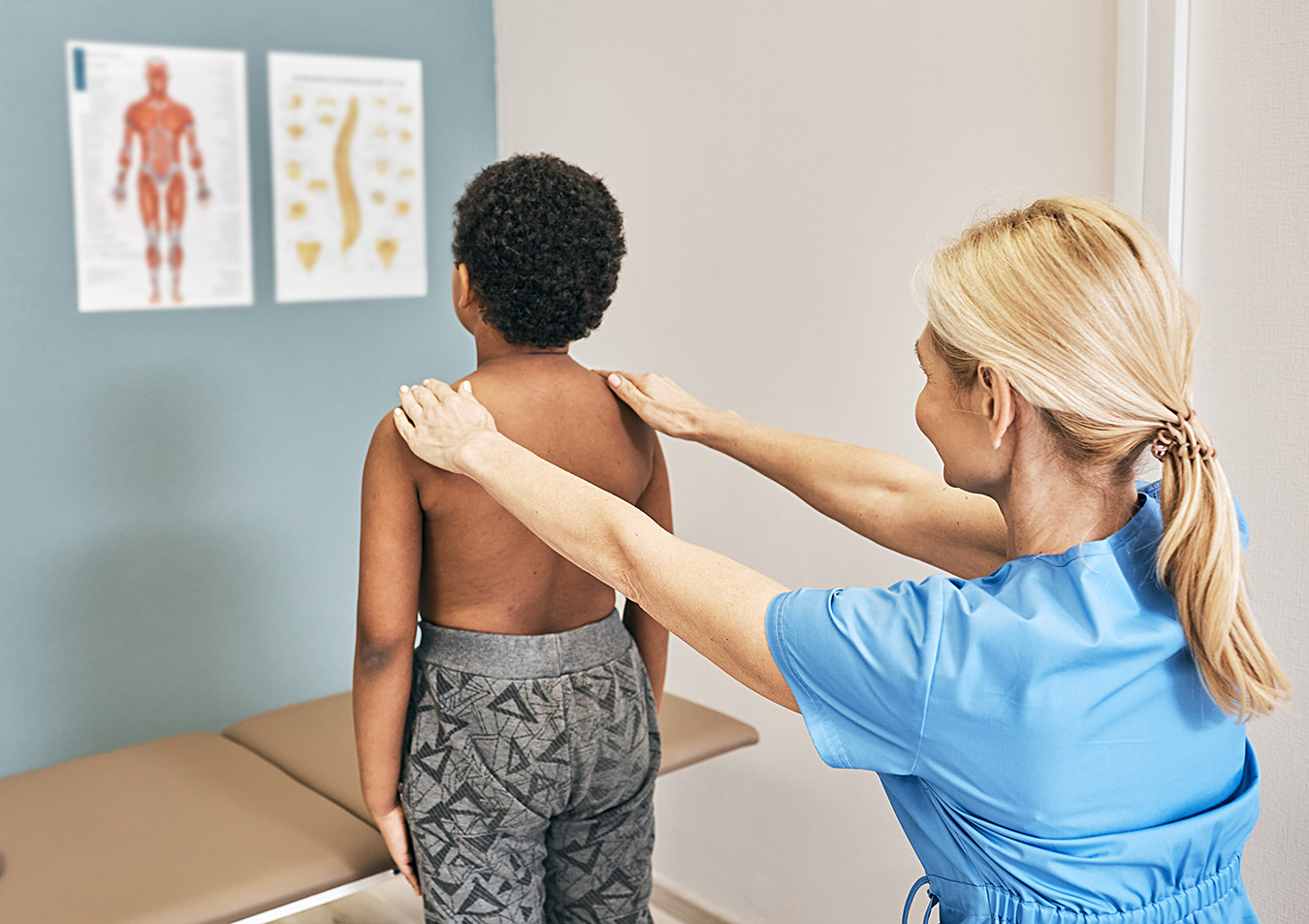Scoliosis: What Parents Should Know

Approximately 3 million people are diagnosed with scoliosis each year. Scoliosis, or the sideways curvature of the spine, generally appears in children around the age of 10. It also may worsen as a child grows.
The good news is that it rarely leads to life-threatening health problems, says the American Academy of Orthopaedic Surgeons (AAOS). However, Nathan H. Lebwohl, M.D., chief of spinal deformity surgery for the University of Miami Health System, says he recommends a visit with your doctor to assess and review potential treatment options.
Most cases have no known cause
The majority of cases in children and teenagers, or about 80 to 85% of them, are known as idiopathic scoliosis. Idiopathic means that the cause of scoliosis is unknown. However, the AAOS says that about 30% of people with idiopathic scoliosis have a family history of the condition.
Many cases of idiopathic scoliosis are milder than other forms and less likely to lead to complications.
The other two forms, congenital and neuromuscular, are complications from other medical conditions such as genetic disorders, muscular dystrophy, or cerebral palsy.
Dr. Lebwohl says that people with these forms may experience more severe symptoms and complications, such as problems with the heart, lungs, and other organs.
Though scoliosis is often considered a condition that occurs in children, Dr. Lebwohl says that he is diagnosing scoliosis more frequently in older patients now, as well. Approximately 10% of 60-year-olds have some form of scoliosis, as well as about half of all 90-year-olds, he says.
How can you tell if your child has scoliosis?
Since idiopathic scoliosis rarely causes any telltale signs and symptoms, Dr. Lebwohl says the best way to detect it is through a visual assessment.
Parents can play a role in this by examining their 9- or 10-year-old in their underwear or a swimsuit.
Have the child stand straight, and then look at the shoulder level and the curve of the waist to make sure they are symmetrical. Then, have your child bend over and touch their toes. Check if their ribs are even on each side of the body.
Early detection of scoliosis is essential, says Dr. Lebwohl, because the condition typically can get worse as a child continues to grow. If scoliosis is recognized and treated early, before a significant growth spurt, it can be treated and prevented from worsening with age.
How do you treat scoliosis?
The proper treatment has been the subject of debate for years, but the best course of action for many cases appears to be bracing.
This line of thinking is mainly based on a 2013 study was published in the New England Journal of Medicine.
In this study, 242 patients received either bracing or observation as the treatment for their scoliosis. The trial was stopped early, as the bracing was clearly more effective for decreasing the progression of severe curves. It also appeared that more time spent in the brace each day led to better results for the child.
Of course, not every case of scoliosis will require bracing. Your best bet is to consult with your pediatrician to find the appropriate treatment approach for your child.
Mild spine curvatures may require no treatment whatsoever, and patients will live a normal life with no complications as a result.
Can physical therapy help?
Another potential treatment is a form of physical therapy known as the Schroth Method. This form of treatment involves exercises that are specifically intended to strengthen the muscles of the back, increase mobility and help with their scoliosis.
Dr. Lebwohl says that scientific studies are currently exploring if the Schroth Method can actively help with mild cases of the issue — that feature small curvatures of the spine.
While the jury is still out on this, he says that the method helps kids with scoliosis to get stronger and move their bodies better.
Wyatt Myers is a contributing writer for UMiami Health News.
Tags: back injury, child back deformity, Dr. Nathan Lebwohl, pediatrics in Miami
